It’s not uncommon for car owners in the JDM scene to add to or modify their car in some way, be it by a few inches of drop, perhaps a nice big spoiler on the back, fitting a beastly turbo, or maybe even installing a comfy set of Recaro seats, but Japan takes the gold for some of the wackiest car mods we have ever come across.
There are too many modding cultures for us to go through all of them, but we’ll touch on some of the craziest below.
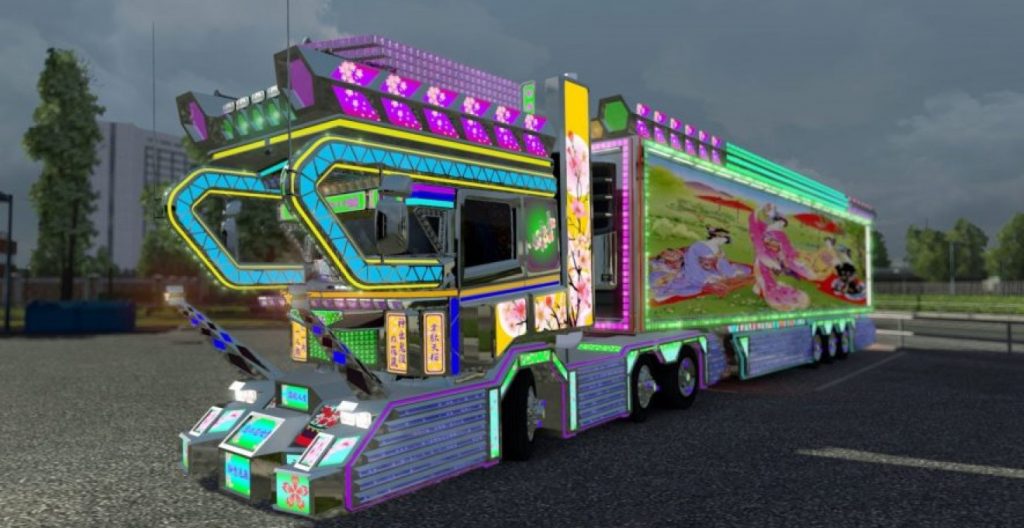
DEKOTORA
First up, Dekotora (this is where the world of transformers comes to life). Dekotora or ‘decoration truck’ is the art of extravagant design usually involving lots of neon or UV lights, chrome, and elaborate artwork on your truck. Now when I say truck, I don’t mean your average pickup, Dekotora is reserved for large trucks or lorries, including converted rubbish collection vehicles and ex-military trucks. Due to the size of these vehicles, it really makes it awe-inspiring when you see one of these pass you by lit up like a carousel ride at Christmas. As this subculture has grown it has been widely adopted by the trucker scene meaning it’s not uncommon to see a Dekotora truck out and about delivering goods around Japan.
It all began when Toei (a Japanese media company) released Torakku Yarō AKA Truck Guys/ Truck Rascals which featured a trucker driving his loudly decorated truck all over Japan. Shortly after the Dekotora fad swept Japan capturing the imagination of young and old alike, although since the ’70s the scene has started taking inspiration from the world-famous Gundam series.
Now, not only are these elaborate vehicles decked out on the exterior most of these trucks are also fully modded on the interior as well as boasting things like designer fabric headliners, fully kitted out room compartments, and even chandeliers!
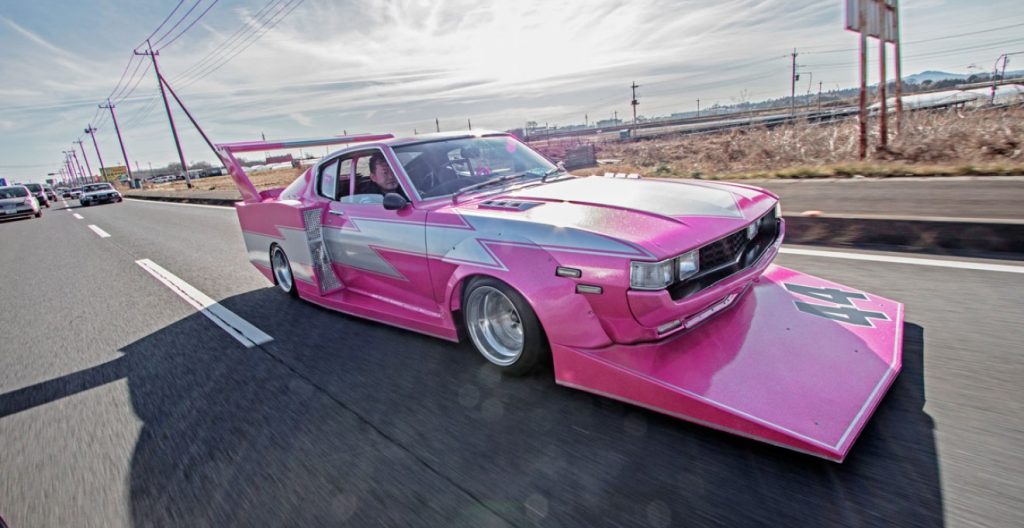
BŌSŌZOKU AND KAIDO
Back in the 1950’s Bosozoku found its roots as a Japanese motorcycle subculture applying often illegal mods to their bikes. With a habit of driving recklessly by weaving in and out of traffic, not wearing helmets, and riding incredibly noisily as they removed the mufflers on their bikes, they also held a reputation for being quite violent. The fierce gang culture Bosozoku was originally associated with has since slowly started to die out, however, the modification aspect of Bosozoku has slowly spread into the world of car modifications.
Now it is common to hear Kaido riders being referred to as Bosozoku but this is not the case, although they are incredibly similar Kaido racers take their inspiration from the old Group 5 race cars of the 80s. Kaido translates to ‘road’ or ‘Street’ so a Kaido racer is the very definition of a street racer and sharing its roots in Bosozoku originally Kaido had something of an outlawed reputation. Nowadays some of the more extreme Kaido mods are a true sight to behold, featuring huger fender flares, feet long exhaust pipes, and incredible spoilers these really are some of the most wonderfully outrageous on the planet.
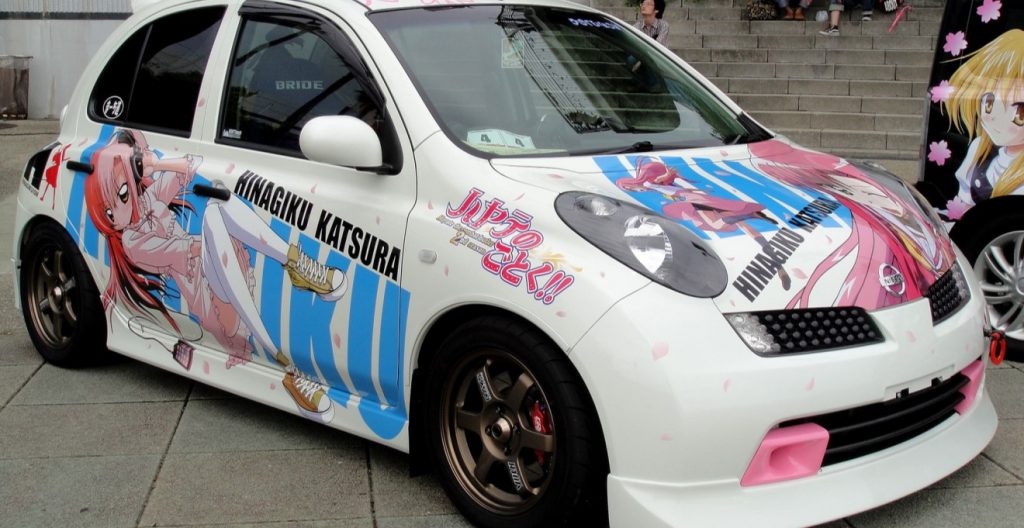
ITASHA
Literally translating to ‘painful car’ (can you see where we may be going with this one…) Itasha is a car decorated with manga/anime/video game images, usually featuring scantily clad women.
A relatively newish subculture, Itasha started around the 1980s with plushies and stickers but took off more recently with the anime boom hitting the internet. You can now commonly see Itasha cars on the trackway as the decals are featured on racing vehicles across the regional club and sometimes international events.
With so many different subcultures out there it’s too hard to list them all, but I thought a special shout should be made to these little odd mods that can be seen in Japan and in a lot of JDM vehicles over here.
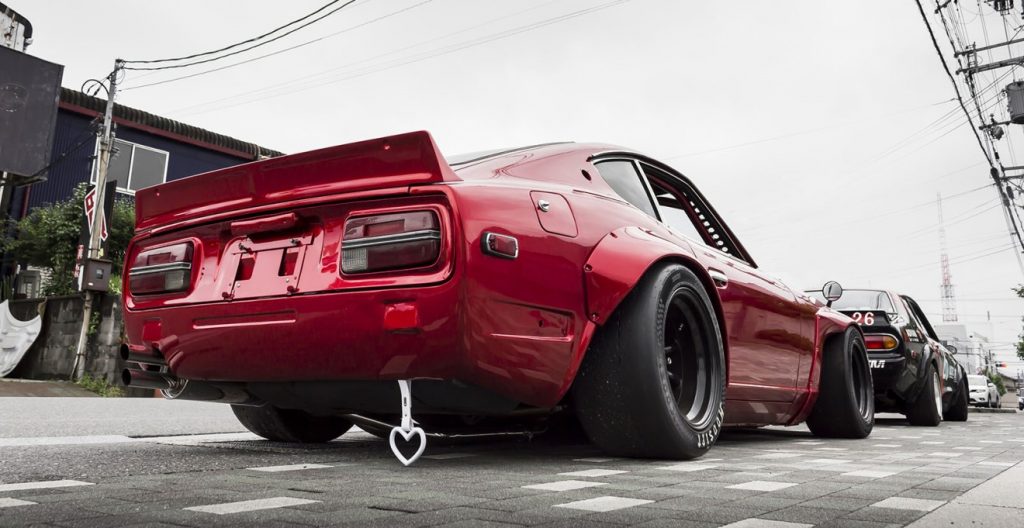
TSURIKAWAS
You have probably seen these hanging from the back of, or interiors of, lots of JDM vehicles. These are in fact called tsurikawas. These started out as subway handles that were stolen by the Bosozoku gangs, these little handles were then attached to the interior of their cars so passengers could hold on whilst ‘safely’ hanging their body out of the window (maybe take the word safely with a pinch of salt!) Nowadays these handles come in an array of shapes, colours and sizes and no longer need to be stolen from the subways as you can quite easily pick them online. Some enthusiasts still attach these to the back of their car so they scrape the ground as you drive, this is usually to show how low their vehicle is, others use them purely as a decorative item or a subtle nod to their history.
ONIKYAN OR STANCENATION
So we have all seen a car with camber, usually, we see them with a slight angle to help with road grip so you can corner at higher speeds, which is what camber was originally designed for.
However, Japan takes cambered wheels to whole new heights……or angles….
This negative camber serves no real purpose, it is usually just for entertainment or shock value but the style has its own following and lots of shows are seeing more and more cars with this severe camber look.
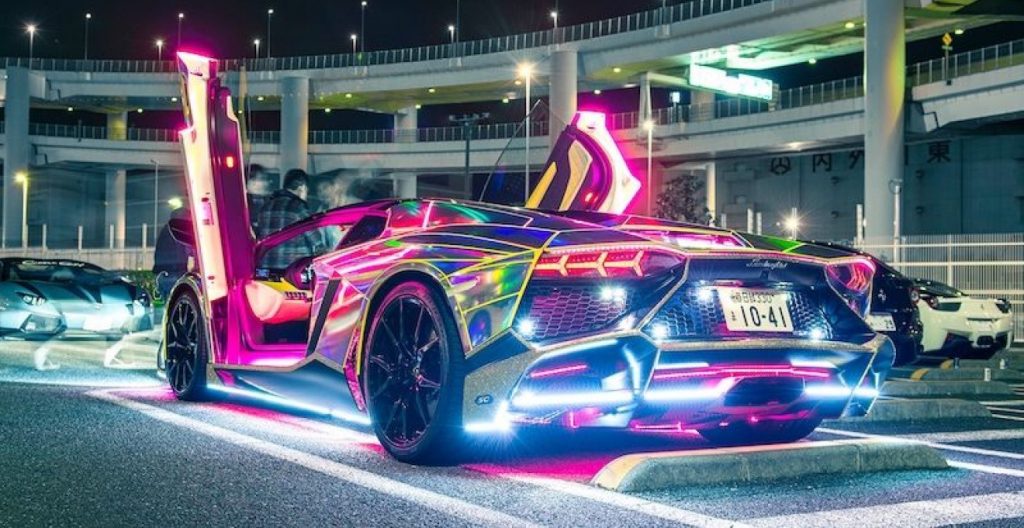
NEON
Not really specific to Japan or JDM but they do it so well it was worth a shout out. Saturday nights in Tokyo you can find Japan’s very own supercar crew riding around in their custom Lamborghinis lighting up the night. Riddled with iridescent wrap jobs, neon strips and multi coloured lights it’s like watching the sporty version of the Coca-Cola Christmas truck fly by.
LAMBO DOORS
On the topic of Lamborghinis, it’s not unusual to see a JDM car sporting some scissor doors, these kits are easily accessible and a favourite for the JDM scene. Some advantages of these doors are that you can drive with the door open (because we all want to do that), they make it easier to exit the car in a tight space (useful for when you take your scissor door civic down the supermarket and you get blocked in) and it reduces the hazards to cyclists or passers-by.
Disadvantages, if you crash and roll, you can’t get out.
But in the right car they can make a great impression.
TOW HOOKS
These are usually on the back of race cars so if they go hurling into a wall it makes it easier for the car to be hitched and towed back out, authentic ones are huge and structural members of the chassis. The ones we see on JDM road cars are more of an accessory than a necessity but it’s a small mod that has taken off much like the tsurikawas.
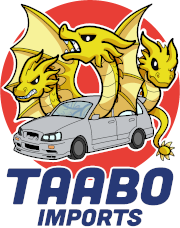
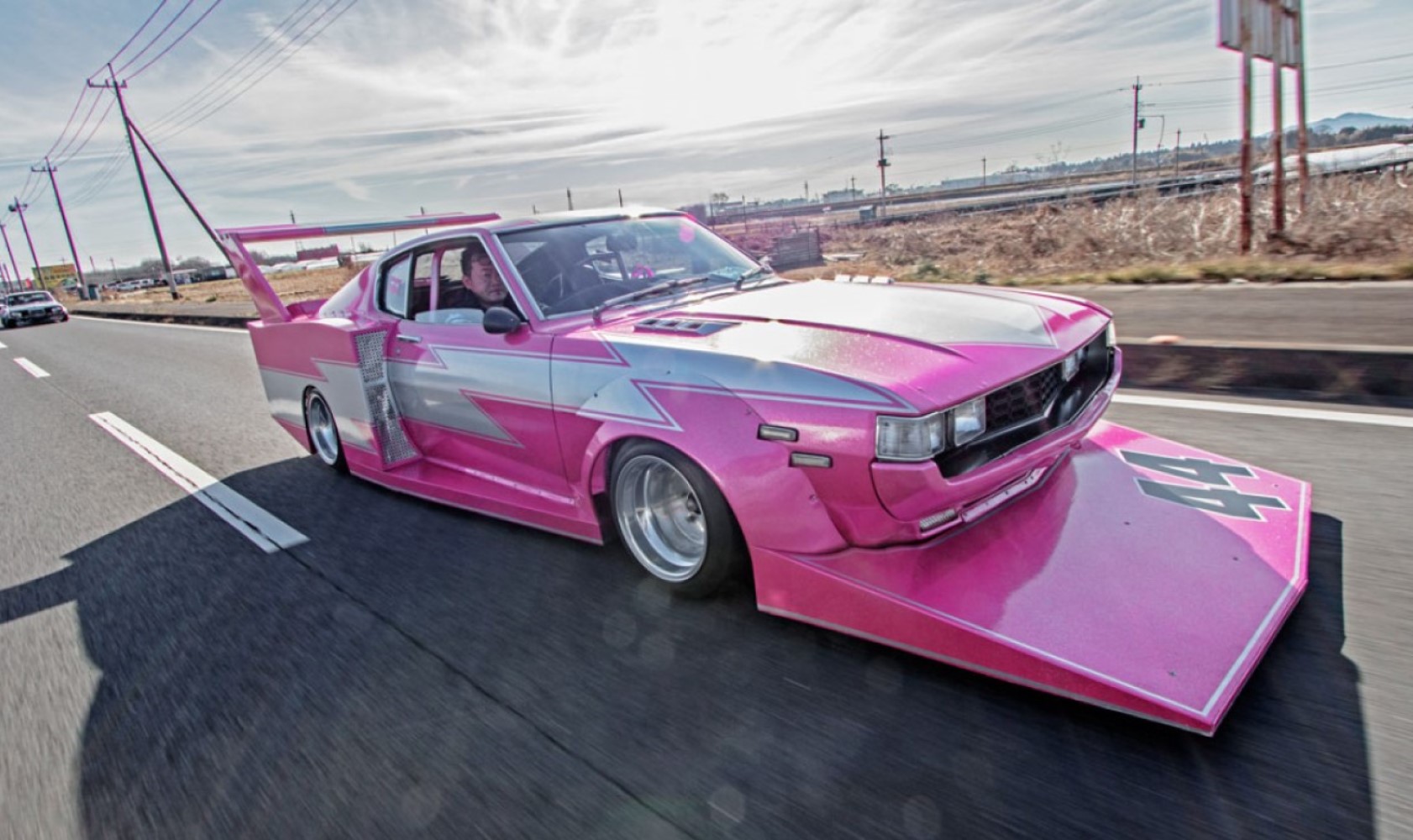
Leave a Reply